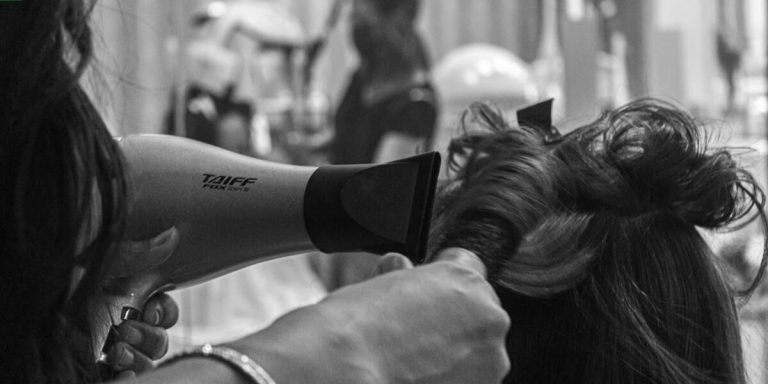Temple Hair Regrowth: Unraveling the Science behind It
Scientists, dermatologists, and trichologists have worked for years to understand temple hair regrowth. This topic remained largely unexplored in human biology until recently, adding complexity to our understanding of genetic factors’ influence on predisposition toward significant hair loss and the prospects for regeneration.
“Temple hair regrowth” refers to recovering or restoring lost hairs around the temples on both sides of the forehead where thinning typically starts.
We will delve deeper into various scientific theories that explain why certain components provoke occurrences and what actions we can take. We will unmask the science behind temple hair regrowth to better understand perspectives ranging from cellular activities affecting follicle health to endocrine influences on growth cycle duration. These elements are crucial when crafting effective strategies against premature balding patterns, such as receding temples.
Did you know?
Contrary to popular belief, temple hair regrowth is possible and scientific studies have shown that scalp massages can often stimulate growth due primarily to increased blood circulation.
Understanding Temple Hair Loss: Causes and Mechanisms
Understanding what causes hair loss specifically around the temples is critical in taking appropriate steps for regrowth. Temple hair loss, scientifically termed as ‘bitemporal recession’, often occurs due to various underlying factors that disrupt normal follicular growth patterns. The reasons range from genetic predisposition and hormonal irregularities to lifestyle habits.
Firstly, genetics plays a pivotal role here. If your parents or grandparents experienced similar temple receding pattern, there’s a higher probability you might face it too – this condition is known as Androgenetic alopecia. On top of these hereditary influences, imbalances in hormones such as dihydrotestosterone (DHT) contribute significantly towards thinning at the tempers in both sexes but with men more prone due to testosterone levels.
That said, not all cases are attributed strictly to biology alone; certain personal habits accelerate this process too! High-stress levels put undue pressure on your scalp’s follicles leading them into premature resting phase causing shedding eventually while poor nutrition starves your body including the scalp off essential nutrients required for healthy strands development and maintenance which can lead directly/indirectly towards temple balding.
In essence understanding these mechanisms behind why one experiences bitemporal recession paves way better targeting treatments making any subsequent Hair Regrowth efforts productive indeed.
The Role of Genetics in Temple Hair Thinning
Genetics plays an integral role in hair thinning, notably in the temple areas. Many individuals wonder why their temples are a primary target for hair loss and what they can do about it. Let’s explore this subject further.
The foundation of our physical attributes is genetics – including our skin type, eye color, and yes – even patterns of baldness. Genetic predisposition to hairstyles such as high foreheads or receding hairlines have been passed on through generations.
Various scientific research has confirmed that male pattern baldness or Androgenetic Alopecia often commences at the temples before spreading elsewhere on the scalp.The key culprit behind this form of alopecia is dihydrotestosterone (DHT), a powerful derivative of testosterone.
Hormonal Imbalances and Their Impact on Temporal Regions
Hormonal imbalances are often overlooked, but they play a significant role in temple hair loss. Several hormones contribute to the health and growth of our hair – when these hormone levels fluctuate beyond normal ranges it can affect your hair’s overall condition.
A prime example is Dihydrotestosterone (DHT), an androgen that contributes significantly to male pattern baldness. Both men and women produce this hormone, though its effects tend to be more pronounced in males due to their naturally higher testosterone levels.
Higher quantities of DHT attach themselves to the receptors present in your scalp, particularly around temples causing follicles there shrink over time until eventually ceasing production entirely leading to thinning or balding patches on sides of head also known as temporal regions.
Stress induced hormonal changes like excess cortisol release also exerts similar impacts on temple region thereby hampering potential for “temple hair regrowth”. Long-term stress not only increases cortisol levels but negatively influences other critical hormones pivotal for maintaining healthy locks such as thyroid gland driven thyroxine or sex-related estrogen & progesterone among females triggering noticeable shedding at temples.
Proven Strategies for Stimulating Temple Hair Regrowth
In our quest to maintain a youthful appearance, temple hair regrowth has become an essential aspect worthy of attention. In the current era where stress and lifestyle choices play pivotal roles in influencing hair health, experiencing thinning or balding at the temples is not uncommon. However, all hope is not lost as there are proven strategies available that can stimulate temple hair growth.
One such effective method involves incorporating nutrient-rich foods into your diet – hearty servings full of vitamins A,B,C and E along with minerals like iron and zinc have shown remarkable results when it comes to supporting healthy hair regrowth. Not only do they revitalize lifeless strands but also boost scalp health by improving blood circulation which aids new follicle development.
Topical treatments such as minoxidil (Rogaine) could be another viable solution to deal with receding temples; backed up by strong clinical evidence affirming its efficacy in fortifying existing hairs while promoting newer growths over time.. Apart from these conventional alternatives, emerging innovations including low-level light therapy or platelet-rich plasma treatment hold promising allure due their non-invasive nature coupled with favorable outcomes on continuous usage.
Harnessing the Power of Topical Treatments
Topical treatments have made swift strides in the field of temple hair regrowth over years, and their utility cannot be underemphasized. Here’s how you can harness this power for effective results.
Firstly, it’s imperative to note that different kinds of topical treatments are available in today’s market. They range from over-the-counter solutions such as Minoxidil (commonly known as Rogaine), which is highly recommended by experts worldwide to homemade organic concoctions formulated using natural ingredients like onion juice or aloe vera.
Minoxidil has been scientifically proven to stimulate hair growth. It works by prolonging the growth phase of your hair follicles and revitalizing shrinking ones, resulting in fuller, thicker hair at your temples after consistent use usually within 3-6 months period.
Ensuring regular application is key when using these therapies since consistency paves way towards success here; skipping doses may lead delays achieving desired outcome i.e., significant improvement overall quality quantity head-covering strands!
In conclusion: whether resort medical offerings turn nature guidance embracing commitment patience definitely puts journey towards beautiful lush locks right track!
Diet Adjustments to Promote Healthy Hair Growth
Modifying your diet can significantly influence temple hair regrowth. It’s crucial to consume essential nutrients and vitamins that aid in promoting flourishing locks.
Start by incorporating proteins into your daily intake. Protein is fundamental for hair growth as our strands are primarily made of keratin – a form of protein itself. Sources like fish, lean meat, eggs, and dairy products are abundant in this nutrient.
Secondly, ensure you have enough Vitamin A in your meals. This vitamin boosts cell growth including those responsible for hair regrowth on temples. Foods such as sweet potatoes, carrots or spinach contain good amounts of Vitamin A.
B-vitamins also play a key role in maintaining healthy tresses while stimulating new growth around the problematic areas like temples specifically Biotin (Vitamin B7). Consider integrating more whole grains, almonds & leafy greens which house generous supplies of these vitamins into your food servings.
Next up on the list: Omega-3 fatty acids! These work wonders due to their anti-inflammatory properties – preventing inflammation that could otherwise inhibit temple hair development from within follicles themselves; here’s where salmon comes handy along with chia seeds or walnuts being other potential sources worth considering too!
Advanced Treatments for Restoring Density to Temples
Entering the era of advanced treatments, achieving temple hair regrowth is no longer a challenge but an expectation. The modern world has witnessed significant milestones in combating various forms of hair loss and restoring density to temples stands as one such accomplishment. Today’s scientific advancements provide groundbreaking options from topical applications to minimally invasive surgeries that promise not just growth, but dense healthy locks even at your temples.
One remarkable development includes Follicular Unit Extraction (FUE) techniques which have revolutionized the way we perceive surgical intervention for hair regrowth. In this process, individual follicles are harvested meticulously from parts of your scalp where they’re naturally more abundant and transplanted into the thinning or balding areas – particularly effective for restoring density in temples without any conspicuous scarring.
In addition to FUE procedures, there exist numerous FDA-approved medicated solutions like Minoxidil and Finasteride that have shown commendable success rates when it comes down to temple hair restoration. These over-the-counter miracle workers penetrate deep within your roots stimulating blood flow while regulating hormonal imbalances thereby fostering durable results right from home.
Apart from these breakthroughs, taking advantage of laser technology’s power through Low-Level Laser Therapy (LLLT), designed specifically for targeting problem zones like our temples can be monumental on this journey towards boasting richly-filled-in crowns once again.
Breakthroughs in Laser Therapy Applications
The sphere of hair regrowth has been constantly evolving with exciting breakthroughs making their appearances every year. One such revolutionizing treatment that’s gaining a high success rate is Laser Therapy.
In recent times, the scope for laser therapy in promoting temple hair regrowth has seen unprecedented advancements. The reason behind its popularity lies in its non-invasive nature and promising results – an engulfing hope for those fighting baldness or thinning temples.
Laser treatments use Low-Level Light Treatment (LLLT) to stimulate cell activity on the scalp. This stimulation prolongs hair follicles’ growth phase, resulting in a thicker density over time. You might wonder about the specific effects on temple hair regrowth; here’s what science reveals:
1) Targeted Approach: Until now, tackling receding temples have often met dead ends due to reasons like intense sensitivity involved. But laser devices can pinpoint exact problem areas without causing harm ensuring maximum effectiveness.
2) Promotes Circulation: Increased blood flow stimulated by LLLT brings more nutrients and oxygen to your dormant follicles around your temples hence promoting stronger strands over tedious waiting periods.
Surgical Options: Transplant Techniques Focused on the Temples
Surgical options for temple hair regrowth are seeing significant advancements in 2023. A popular choice among these is Hair Transplant Techniques focusing specifically on the temples, a key area of concern for both men and women.
Hair transplant for temples involves relocating healthy follicles from other parts of your scalp to fill out thinning or balding spots around your temples. The methods used today have evolved greatly since their inception and now offer results that look all-natural with minimal discomfort during recovery.
One such technique is Follicular Unit Extraction (FUE). This minimally invasive procedure transfers individual hair grafts to desired areas, making it ideal for restoring density around delicate regions like the temples. FUE has gained tremendous popularity due its virtually painless nature and low risk factors.
Another effective surgical option includes Scalp Micro-Pigmentation (SMP). Although not exactly a transplantation method, SMP works by creating an illusion of fuller hair by depositing pigments into the scalp’s dermal layer mimicking natural-looking short hairs; this can significantly enhance appearance if you’re dealing with moderate receding at the temples.
Combined treatments sometimes prove beneficial too! Surgeons often suggest supplementing transplants with Platelet-Rich Plasma Therapy (PRP) which utilizes growth factors derived from your own blood plasma to stimulate inactive follicle cells thereby fostering new growth post-surgery.
Conclusion
In essence, temple hair regrowth isn’t a mystical process. It is science – just your body doing its best to repair and rejuvenate itself. With the right treatment regime coupled with patience, you can potentially win back that lush mane of yours!
The magic lies in understanding your biology, tailoring treatments accordingly and being persistent.
Don’t forget we have an array of well-researched pieces on different facets of hair regrowth available for you here at our website. Empower yourself by arming yourself with knowledge about what’s happening up top—and how to make it better—right here on our platform dedicated to all things “Hair Regrowth”. Take this journey one step (and strand) at a time!







